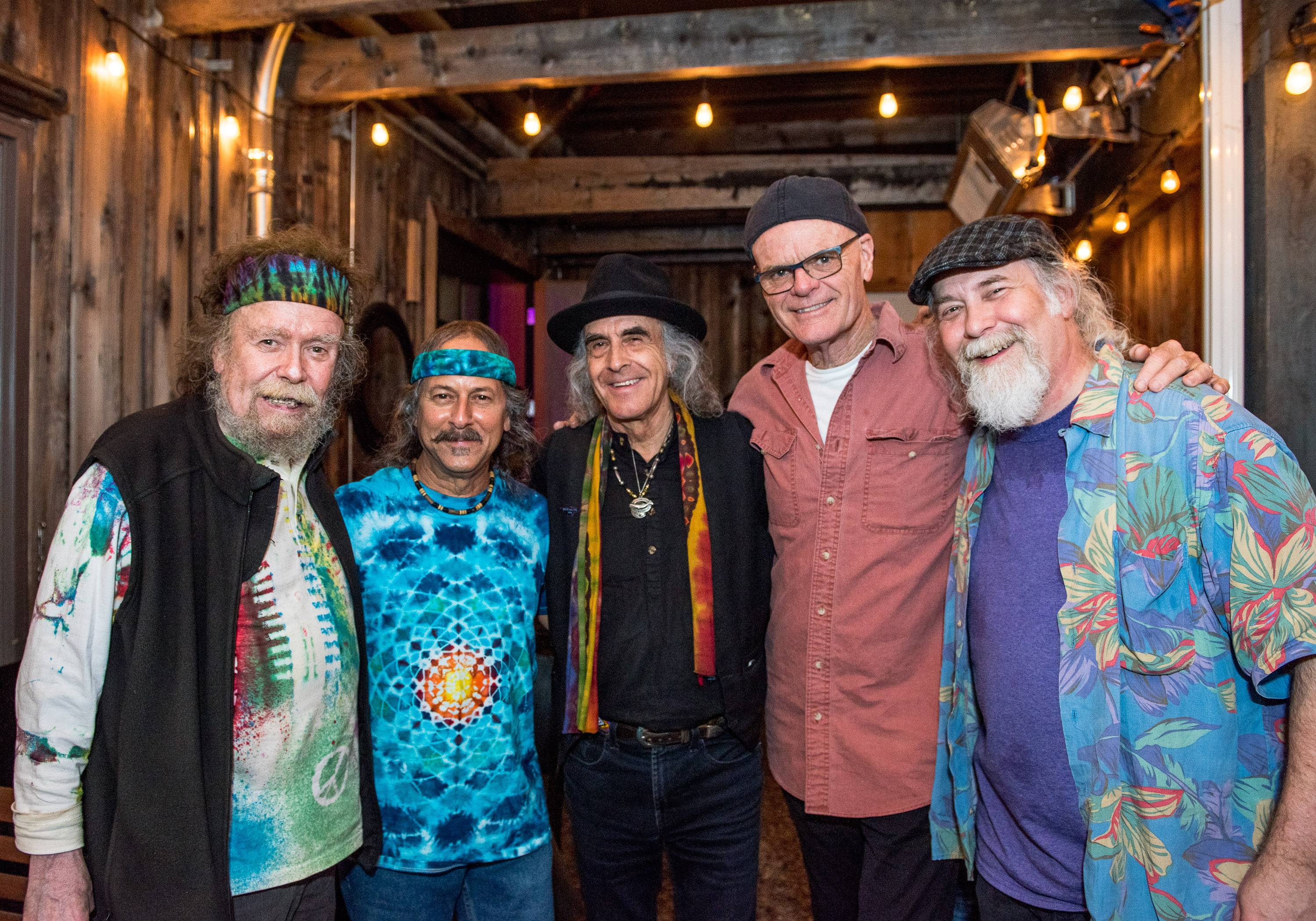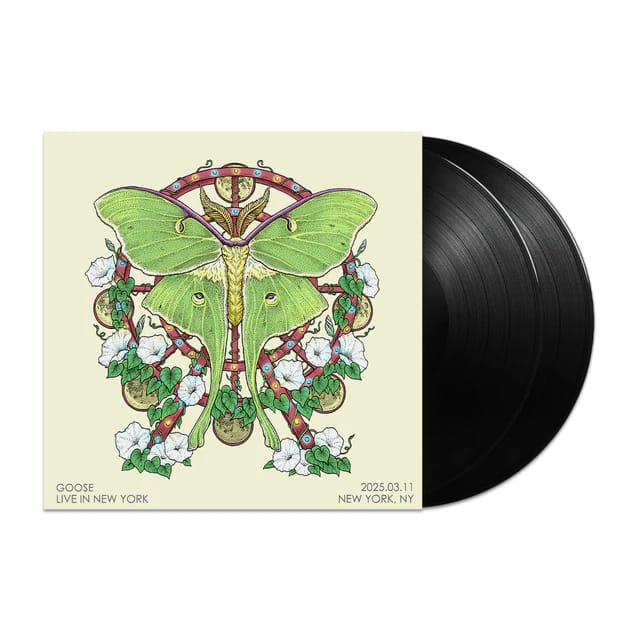David Nelson Reflects on Writing and Recording with Robert Hunter

In January 2020, four months after the death of Robert Hunter, David Nelson paid tribute to his friend by releasing a studio version of their song “Movin’ Right Along.” The pair first connected in the early 1960s as part of the Palo Alto folk scene, forming the Wildwood Boys alongside Jerry Garcia. By the decade’s end, as Garcia and Hunter initiated a vital songwriting partnership, Nelson focused on the New Riders of the Purple Sage, where John Dawson contributed most of the material. After the New Riders disbanded in 1982, Nelson placed an increased emphasis on crafting original compositions and enlisted Hunter’s assistance.
The pair would work together on and off over the years that followed and, after Hunter passed, Nelson decided to revisit some of their unreleased collaborations. Nelson recorded “Movin’ Right Along”—a timeless tune that explores themes of warfare and mortality—with his stellar David Nelson Band, a group that also features Barry Sless, Mookie Siegel, Pete Sears and John Molo. Though Nelson has experienced some health issues in recent years that have limited his tour itinerary, he recently started ramping things up a bit with the DNB. And, he hints that there may be a few additional Nelson-Hunter originals waiting in the wings.
How did you meet Robert Hunter?
The actual start of the whole scene in the ‘60s began with Peter and Rodney Albin. Pete Albin, who was the younger brother, became the bass player for Big Brother & the Holding Company, but this was much earlier, around 1960.
There were lots of parties where our friends would get together to play and Pete played a big role in that. Then, Rodney had this idea to create a little folk-song cabaret gathering where people could go and see us. We called it the Boar’s Head. It was really a homespun thing. He got the use of the upstairs to a bookstore in San Carlos. I went there with Rodney and we took a bookshelf, put it on the floor, put a rug on top of it and that was the stage. We got a microphone and a little sound system. Then he said, “Come on, we’re gonna go find some talent.”
So I went with Rodney and Pete to Kepler’s Bookstore in Palo Alto, which was the main hub for the hip community for years and years. We went in there and looked around. Kepler’s had this table area where you could get an espresso and read your book. We were digging through the books and peeking through the spaces in between the books, and there was a guy playing the guitar. Pete said, “That’s Jerry Garcia.” I had never heard of him before.
So we went over and met him. Rodney had a banjo and Jerry was very interested in playing banjo at the time, so we sat down. We talked a little bit and presented the idea of the Boar’s Head. Garcia said, “Sure,” and that’s how it started.
It was every Tuesday and every Thursday in the summer. That first day, I can remember being there all ready and excited that it was going to happen. We waited and waited and, all of a sudden, I heard a motorcycle and I thought, “They’re here.” [Laughs.] Some people came in to play including Jerry Garcia, who walked up the stairs with a guitar in his hand. He played a couple of tunes, along with a few other people, including Marshall Liescester, who played five-string banjo and guitar. He’s still around—he’s a college professor [of English literature at UC Santa Cruz].
So these guys played and we sat and listened. It was incredible to realize that this thing was happening. I got more interested in banjo and I bought one because I had a job at Sears and Roebuck. I saved up some money and got this Paramount Style A. Then, a couple days later I get a call—“Hi, it’s Jerry Garcia, I heard you got a banjo. Why don’t you bring it down to Saint Michael’s Alley in Palo Alto?” That was a coffee house. I didn’t have a car at the time so I asked a friend to come over and help me. We put the two instruments—guitar and banjo—in hard-shell cases between us, sticking straight up, and I drove a motorcycle down to Palo Alto from San Carlos. I would never think to do that these days but we did it back then. When we got there, Jerry asked me if he could borrow it, and that was a step away from us playing together.
What had been happening was that Jerry and Bob had played a couple of gigs at a Stanford fraternity house or something—a real first-time affair kind of thing. They played as a duo. Garcia was getting into the banjo and then, at one point, he said, “We should get a group together.” So Garcia, Hunter and I, along with a dobro player we had met named Norm Van Mastricht, called ourselves the Wildwood Boys. That was the first band [in 1963].
What moment jumps out at you from the Wildwood Boys era?
We played this club called the Tangent in Palo Alto most frequently. It was on the corner of University Avenue into El Camino Real by Stanford University. So, one night, we were playing at the Tangent— Hunter’s playing mandolin, I’m playing guitar and Garcia is playing my banjo. Hunter started out as a bass player but then we got him playing mandolin. That’s another amazing thing about Hunter: He could play something on almost any instrument you could name.
Hunter would also be the emcee, just doing impromptu stuff. I remember one time he said, “On guitar, we have Simple David Nelson who never says anything.” I was very quiet in the early days. And he said, “On the banjo, we have Honest Jerry Garcia.” I thought it was really funny that he would have names for everybody. He would also say something about the song that we were about to do. We weren’t doing originals; we were trying to play bluegrass.
Hunter once explained to me that, during this period of time, it never occurred to him to write any original music. Do you remember that?
Hunter was a novelist; he was a writer. He was seriously getting into short stories and stuff like that. Some of them were autobiographical, but others were not. When the Grateful Dead started and they got that contract at Warner Bros., the guy who signed them, Joe Smith, said, “Come down and record in Los Angeles.” So they went down to Los Angeles. Garcia called Hunter and said, “Come on, you gotta see this.” He spent a whole day trying to talk Hunter into writing songs. But Hunter kept saying, “No—I’m a novelist. I don’t know anything about music.” And then he finally considered writing some songs. It’s just incredible to me. When you look at the body of work, the amount of stuff is overwhelming. Once Hunter got started on it, the whole thing exploded.
Do you recall the first song that you worked on with him?
At first, I wasn’t into writing songs—I was totally into learning stuff. I thought, “There are enough songs written; I don’t need to do that. Who needs another writer? There’s so much good stuff.” But after the New Riders kind of dissolved, I was doing sequencing stuff at home. I got some electronic musical instruments together—some synthesizers and a program called MasterTracks Pro. That’s where you punch in one note at a time and you can edit the duration and the feel of the notes. I began composing little ditties and that’s when I thought, “I should write some songs.” So I called Hunter up—this was in the ‘80s—and said, “Hey, how about some song lyrics?” I told him what I was doing and he said, “Send me some of the music because music comes first.”
So I made a little cassette tape and sent it to him. Then he would write words to fit my instrumental phrases. It was amazing to me that he’d find words that fit so perfectly. The first one was “Long Gone Sam,” and then it just went on and on until he started sending me whole batches of lyrics.
Would he allow you to make any changes to his words? I’ve heard that, on some occasions, he would allow people to do so, although he typically preferred that they didn’t.
Most of the time he said, “No, please don’t change it.” At this point, now that I’ve written some songs, I know exactly how he felt. If somebody took my song and then decided to change a word or two, I’d be like, “I didn’t write that.” You feel like it’s gonna get blamed on you no matter what.
How did you come to write music for “Movin’ Right Along?”
That was part of one of the batch of lyrics he sent me. He’d send me a folder by email and I’d go through it. Over the years, he sent me a few folders, each containing dozens of song lyrics. There are tons of them. That’s where “Movin’ Right Along” came from. At one point, I was putting melodies and music to most of them. I’d take two or three and just go for it. Then a week later, I’d do three more.
I’m still amazed by how timely his lyrics continue to be. That’s what led me to record “Movin’ Right Along.” It’s about war and the weird things about a country declaring war: “I was born on Caanan’s Shore/ Movin’ right along/ Loaded my gun and went to war/ Movin’ right along/ I shot left and I shot right/ Now listen to my song/ I have lost the appetite/ Movin’ right along.”
We recorded it at Allegiant Studios in San Anselmo. It was recorded live, except for one overdub which was the organ. Then, it was mixed by a Grammy Award-winning guy, Ross Hogarth. We were just really excited about how it came out.
Do you have additional Hunter lyrics that might yet see the light of day?
There’s a little small batch of stuff left. I am totally into it and, every once in a while, I bring one out and check and see if I have an idea for it. If so, then we’ll try it. A song really comes into its own when you play it in a band. The idea for it is one thing, but how it plays out in the band is how it really sounds.
Looking back on nearly 60 years of friendship with Robert, what else jumps at you?
His writing always amazed us, everybody who knew him. And to think he was the guy who was reluctant to write song lyrics—then, eventually, he said, “Well, OK, I’ll try it.” The results are hundreds of songs that are of world-class quality, hoards of them. I’ve got his first book, the big hardbound book of his songs, and I still go through it every once in a while. I’ll just pick it up and read some lyrics. I’d recommend that to anyone. You’ll be amazed. I promise.




















